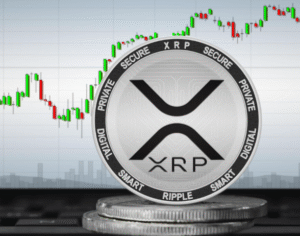$BTC $ETH #Ledger #CryptoNews #Blockchain #CryptoWallet #Multisig #DeFi #TransactionFees #CryptoCommunity #Bitcoin #Ethereum
Is Ledger’s New Multisig Interface Worth the High Fees? Uncover the Controversy!
Ledger’s news surrounding its latest multisig app has ignited a heated debate among the crypto community. While the app showcases impressive technological upgrades, it has also drawn criticism for its newly introduced transaction fees. This situation raises questions about the balance between innovation and cost in the rapidly evolving cryptocurrency landscape.
The updated multisig interface aims to enhance security features for users managing multiple assets. Such advancements are essential in a sector where security breaches can result in substantial financial losses. However, many users are expressing concern that the additional fees may transform what was once a user-friendly tool into a “cash cow” for the company. This sentiment has sparked discussions about the broader implications of fees on user adoption and trust.
As crypto adoption continues to rise, the question of transaction fees becomes increasingly relevant. While some argue that fees are a necessary aspect of maintaining robust systems, others feel that they may deter potential users from engaging with the platform. In particular, critics emphasize that the new fees could stifle innovation by making it cost-prohibitive for smaller investors to utilize premium features.
Furthermore, it’s vital to consider the competitive landscape. Other wallet providers are already offering similar multisig functionalities without imposing additional fees. This situation places pressure on Ledger to justify its pricing model or risk losing market share to competitors that prioritize accessibility. Users are now weighing the advantages of Ledger’s new features against the costs associated with using the platform.
The introduction of these fees also raises questions about Ledger’s long-term strategy. Is the company prioritizing short-term revenue over long-term customer loyalty? The answer to this question may determine whether Ledger can maintain its position as a market leader or if it will see a decline in user engagement.
In navigating this controversy, transparency will be crucial. Ledger must communicate clearly about why these fees are necessary and how they will be used to improve the platform. Users need reassurance that their investment in the app translates to tangible benefits, enhancing their experience rather than diminishing it.
Ultimately, the debate over Ledger’s new multisig app represents a broader discussion within the cryptocurrency ecosystem. As more companies enter the market, the balance between innovation and cost will be a critical factor in shaping user experiences. For those interested in exploring more about the cryptocurrency landscape, consider visiting this link for additional insights.
As the situation continues to evolve, it is essential for both users and investors to stay informed. For example, those looking to engage with Ledger’s offerings might also want to explore other options, such as Binance’s platform, which may provide alternative solutions for managing digital assets.
In conclusion, Ledger’s new multisig interface is undeniably a significant step forward in technology. However, its associated transaction fees have sparked considerable backlash. As discussions unfold, it will be interesting to see how Ledger addresses these concerns and whether it can retain its loyal user base in an increasingly competitive market.







Comments are closed.